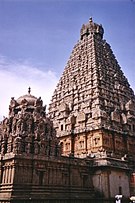This article includes a list of general references, but it lacks sufficient corresponding inline citations. (July 2020) |

| Part of a series on |
| History of Tamil Nadu |
|---|
 |
| Indian classical music |
|---|
 |
| Concepts |
The ancient Tamil music is the historical predecessor of the Carnatic music during the Sangam period spanning from 500 BCE to 200 CE.[1]
Many poems of the classical Sangam literature were set to music. There are various references to this ancient musical tradition found in the ancient Sangam books such as Ettuthokai and Pattupattu. The early narrative poem Cilappatikaram, belonging to the post-Sangam period (5th or 6th century) also mentions various forms of music practiced by the Tamil people.
Music was an integral part of the compositions of the Tamil Saiva saints such as Appar, Siva Prakasar, Thirugnana Sambanthar and Manikkavasagar during the Hindu revival period between the 6th and the 10th century.
- ^ Rajagopal, Geetha (2009). Music rituals in the temples of South India, Volume 1. D. K. Printworld. pp. 111–112. ISBN 978-81-246-0538-7.
